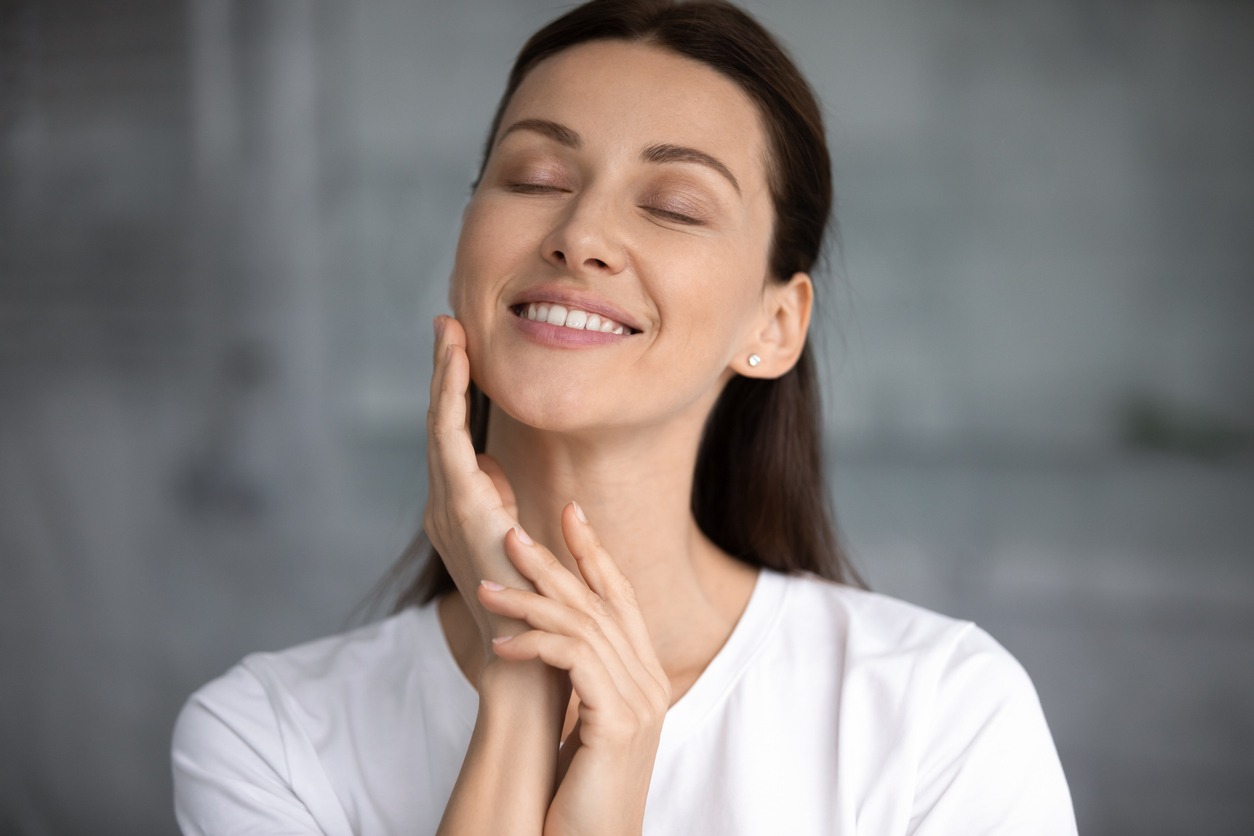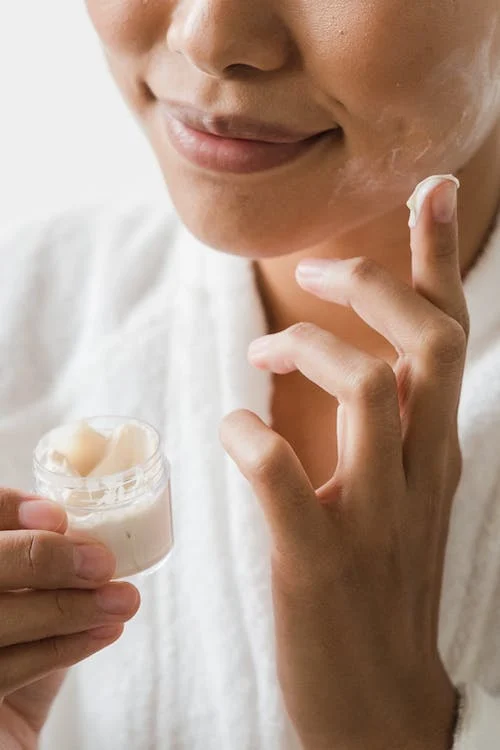Wrinkles are the small lines, creases, folds, or ridges that develop on the skin as a result of repeated facial expressions or the natural aging process. Some wrinkles cause deep furrows or creases to form on the skin.
Collagen, elastin, matrix metalloproteins, and elastic fibers help to strengthen tendons and muscles. Damage to any of these important organs, tissues, or structures may cause the skin to loosen and develop wrinkles.
Why Do We Get Wrinkles?
Wrinkles happen to everyone as they get older. As people age, their skin gets thinner, dryer, and less flexible. making it less equipped to defend themselves from harm. Wrinkles, creases, and other signs of aging develop on the skin as a direct result.
Wrinkles form in the skin for several reasons.
- Age. The aging process naturally causes wrinkles. As people get older, their skin cells grow less quickly, and the dermis, the middle layer of their skin, starts to thin. A network of elastin and collagen filaments provides support and elasticity to the dermis. As this network gets loose and unravels over time, depressions appear on the surface of your skin. Additionally, aging skin is less able to retain moisture, produces less oil, and heals more slowly. These factors all contribute to the formation of creases.
- Sun Damage. Too much ultraviolet (UV) light from the sun can make your skin age faster than it should. This is called photoaging. UV light exposure causes the breakdown of collagen fibers and the production of abnormal elastin. The enzyme metalloproteinase is produced by the body in response to UV damage to skin tissue. This enzyme produces collagen and reforms it. However, some healthy collagen fibers are damaged during the process, leading to solar elastosis, or the disorganized formation of fibers. Repeated, inefficient attempts to repair lead to the appearance of wrinkles.
- Smoking. The regular aging process of your face can be speed up by smoking, which can cause wrinkles. This could be because of what smoking does to collagen.
- Repeated Facial Expressions. Wrinkles and fine lines develop as a result of repeated facial expressions and movements like squinting and smiling. A crease develops just below the skin’s surface every time a facial muscle is used. Also, wrinkles become more permanent as we age because our skin loses its elasticity. Then, these lines become permanent facial features.
There are numerous treatments for minimizing fine lines on the skin, one of which is wrinkle cream.
What Is Wrinkle Cream?

Simply moisturizing will help your skin look better. It temporarily increases skin volume, which conceals fine lines and wrinkles. Lotions, creams, gels, and serums are all examples of moisturizers. They include water, oils, and other substances including proteins, waxes, glycerin, lactate, and urea to hydrate the skin.
Wrinkle creams are moisturizers, but they also include active ingredients that give additional benefits for the user. The purpose of these added ingredients is to enhance the skin’s tone, texture, fine lines, and creases. Your skin type and the active component or ingredients in these products determine how effective they are.
Here are some popular ingredients in wrinkle creams that may enhance the appearance of your skin.
1. Retinoids
Vitamin A-derived chemicals are collectively known as retinoids. This means that they are similar to vitamin A in how they are made or how they work. There are two types of retinoids: topical and oral. Oral retinoids are tablets and capsules that can be consumed orally, whereas topical retinoids are lotions, gels, and liquids that can be applied directly to the skin.
Retinoids are compounds of vitamin A, such as retinol and retinoic acid. These ingredients have been used topically for decades to aid in the restoration of sun-damaged skin and the reduction of fine lines and wrinkles.
There are many varieties and forms of retinoids, including retinol, retinal, and retinyl esters, that can be either natural or synthetic. Because of their beneficial effects on the skin and its appearance, retinoids are a frequent active component in many dermatological treatments and cosmeceuticals. [1]
2. Vitamin C (Ascorbic Acid)
Numerous skin care products on the market today contain vitamin C derivatives such as magnesium ascorbyl phosphate or ascorbyl palmitate but this is the only kind of vitamin C that should be included in skin care products.
Wrinkles form because collagen production slows with aging and sun exposure. Vitamin C is a known antioxidant that may boost collagen production, therefore reducing the appearance of fine lines, scars, and wrinkles. It may also help sun-damaged skin look better. Creams containing vitamin C may initially produce stinging or redness, but these negative effects often subside with regular usage. [2]
3. Alpha Hydroxy Acids (AHA)
AHAs are a kind of acid found naturally in some foods and are often used in cosmetic treatments and products to exfoliate the skin.
AHAs include glycolic acid, citric acid, and lactic acid. They are used to exfoliate (remove dead skin cells). Using an AHA product on a daily basis allows your skin to absorb other products better and promotes the formation of smooth, uniformly pigmented new skin.
The production of new skin cells declines with age and with sun exposure. This can contribute to the development of fine lines and creases. AHAs aid in the removal of the top layer of dead skin cells, exposing fresh new cells underneath. The skin’s collagen and elastin levels may improve with prolonged usage of AHAs. [3]
It has been shown that AHAs, beta hydroxyl acids, and a more recent kind known as polyhydroxy acids are all beneficial in decreasing the appearance of fine lines and wrinkles. [4]
4. Niacinamide
Niacinamide, a form of vitamin B3, is one of eight different types of B vitamins that work together to improve your health in several ways.
When you have an excess of niacin in your body, your body produces niacinamide. Your body can also convert tryptophan, an amino acid, into niacinamide.
The antioxidant properties of this vitamin may aid in the protection and recovery of epidermis damaged by aging, radiation, and stress. Several studies have demonstrated that topical niacinamide can enhance fine lines and wrinkles, as well as skin discoloration. [5]
5. Grape Seed Extract
Grape seed extract is a popular ingredient in many different types of skincare products due to its high levels of antioxidants and vitamins C and E. Grape seed extract is like magic for the skin. It makes the skin smoother and brighter, minimizing wrinkles, and keeps sebum production in check. [6]
6. Tea Extracts
The leaves of the shrub Camellia sinensis can be used to make all kinds of tea. Green, white, oolong, and even black teas may all be made from the camellia sinensis plant.
Camellia sinensis offers several advantages for your skin when applied topically in addition to having advantages for your body when ingested.
Camellia sinensis has natural calming properties when applied to the skin, same as when ingested. This is essential for minimizing redness and supporting the skin’s natural regeneration process, both of which are important in the battle against visible symptoms of aging.
Because your skin’s collagen production naturally declines as you age, taking care of your skin your skin early can slow down the aging process. [7]
7. Coenzyme Q10
CoQ10 is a fat-soluble compound that is present in all of your cells. It is referred to as a “coenzyme” since it is required for other enzymes to operate.
CoQ10 has been discovered to have an important function in healthy skin as a strong antioxidant and electron transporter. While studies on oral supplements have been more common, there is also promising evidence for their topical application.
If you’re seeking for an internal wrinkle treatment, try CoQ10. Since UV radiation is one of the main causes of oxidative stress in the skin, it defends the skin from this damage by acting as an antioxidant. Long-term exposure to UV radiation may damage and disorganize collagen fibers and cause photoaging, which is the premature aging of the skin. In addition to this, it kills fibroblasts, which are cells that generate collagen proteins and assist in the healing of wounds. The end outcome is the appearance of wrinkles and fine lines.
Most of the time, your skin protects itself from UV rays by using antioxidants like CoQ10. But replenishing them is important because they start to decline over time. Topical CoQ10 has been shown in research to considerably reduce face wrinkles. Similarly, a different study discovered that CoQ10 supplements improve skin smoothness while reducing wrinkles and creases. [8]
8. Peptides
Peptides, which are also called polypeptides, may be found in the skin naturally, and they serve a useful purpose in many topical skin care products.
Peptides are combinations of amino acids that produce particular proteins needed by the skin. Collagen is composed of three polypeptide chains; therefore, peptides can stimulate the skin to produce collagen. More collagen can result in skin that appears firmer and youthful.
Your body naturally produces collagen. However, collagen production declines over time, causing skin to appear more creased, uneven, and dull. Peptides have been found to enhance skin texture and wrinkles by stimulating collagen formation. [9]
How Do Wrinkle Cream Work?
The chemicals in wrinkle creams decide how well they work.
The majority of wrinkle creams work by hydrating the skin. They also include emollients, which make the skin feel smooth, as well as other active ingredients.
Occlusives, such as oil or petrolatum, help keep the water in the skin in place while effective, high-quality wrinkle creams add water to skin. This improves the skin’s appearance by adding volume and removing dryness and fine wrinkles.
Some creams, like those containing retinol, do more than just hydrate the skin; they also exfoliate the top layer of dead skin cells and debris. Exfoliation makes the skin appear more radiant and youthful. It also improves the skin’s ability to absorb in the wrinkle cream’s moisturizing ingredients.
Wrapping Up
Changes in texture, black patches, and a loss of moisture are all common side effects of becoming older.
Even if we all agree that getting older is a good thing, the fact remains that there is still a substantial market for anti-aging treatments, especially wrinkle creams.
The goal of using wrinkle cream is to help your skin look and feel smooth and younger, while also reducing the appearance of fine lines and wrinkles.
Follow a strict morning and nighttime skincare regimen that includes cleansing, moisturizing, SPF, deep wrinkle filler, and find a wrinkle cream that really works.
References
- West M., (2021). What to know about retinoids. MedicalNewsToday.
- Understanding Popular Skin Care Ingredients (02, August 2022) Health Essentials. https://health.clevelandclinic.org/skin-care-ingredients-explained/#:~:text=L-ascorbic%20acid%20%28vitamin%20C%29%20This%20is%20the%20only,ascorbyl%20palmitate%20as%20an%20ingredient%2C”%20says%20Dr.%20Bergfeld
- Sissons B., (2021). What are the benefits of alpha hydroxy acid? (AHA). MedicalNewsToday.
- Wrinkle creams: Your guide to younger looking skin. (22, March 2023). https://www.mayoclinic.org/diseases-conditions/wrinkles/in-depth/wrinkle-creams/art-20047463
- Top 6 Benefits of Niacinamide. (19, December 2022). Health Essentials. https://health.clevelandclinic.org/niacinamide/
- Raguram A., (25, October 2021) How Does Grape Seed Work in Skincare to Help Achieve Glowing & Hydrating Skin?
- True Botanicals (2, March 2022). Benefits of Camellia Sinensis Leaf Extract in Skincare. The Ritual
- Nunez K., Coenzyme Q10 (CoQ10): We Explain The Major Skin Care Benefits.
- Gallagher G. (13, May 2022) Peptides and Your Skin Care Routine. Healthline.


